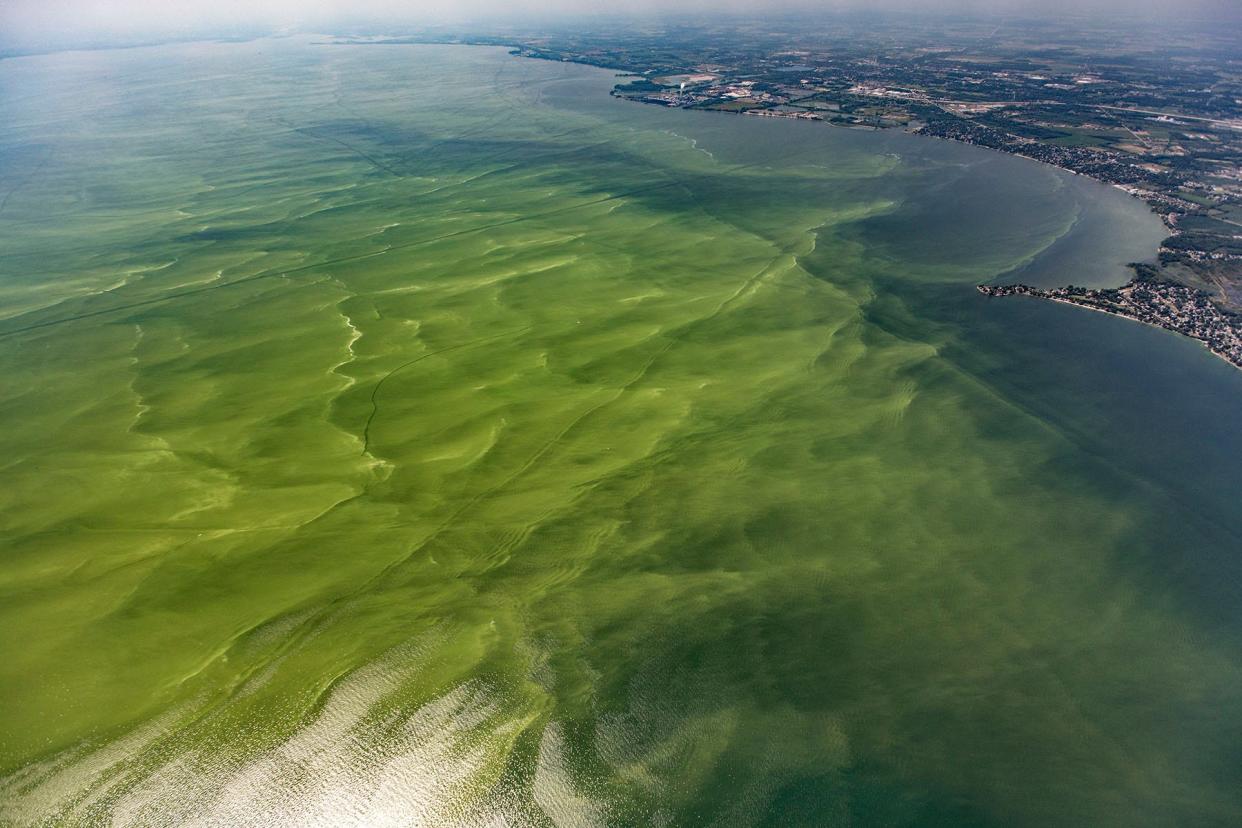How to keep your family safe from harmful algal blooms this summer

With summer still in full swing, Michiganders are spending much of their time on the Great Lakes — fishing, swimming, tubing.
But according to the Michigan Department of Natural Resources, residents living near or visiting bodies of water should be aware of the potential for harmful algal blooms.
HABs are formed by the rapid growth or "bloom" of cyanobacteria, also known as blue-green algae. According to the DNR, cyanobacteria naturally occurs in lakes, rivers and ponds; but some can produce toxins, called cyanotoxins, which can be harmful to people and animals.
In 2022, HABs were reported in 80 bodies of water in 38 counties. Most recently, visible cyanobacteria was identified at Hubscher Park Lake in Gratiot County.
HABs usually appear green, but can also appear blue-green, blue, brown, yellow, white, purple, or red with different textures, such as spilled paint, scums, streaks, mats or discoloration of the water. They typically occur May-October, and most commonly in August and September. They can last for days or weeks and change in size, location and toxicity over time.
Breathing in or swallowing water with HAB toxins may cause illness, such as runny eyes or nose, asthma-like symptoms, difficulty breathing, stomach pain, vomiting, diarrhea, weakness, headaches or dizziness. Skin contact may cause rashes, blisters or hives.
“If you had contact with or swallowed water with a suspected HAB and feel sick, call your healthcare provider or seek medical attention as soon as possible,” said Dr. Natasha Bagdasarian, chief medical executive with the Michigan Department of Health and Human Services. “If you have questions about algal blooms and keeping yourself safe, call 800-648-6942.”
Animals, including dogs, can have vomiting, diarrhea, staggering, seizures or even die after contact with HABs. To prevent illness, keep dogs away from discolored or scummy water and shorelines, rinse them off after contact with lake water and bring them clean drinking water. Report animal illness due to HABs to the Michigan Department of Agriculture and Rural Development at bit.ly/3KxkZYe or by phone at 800-292-3939.
Subscribe: Get all your breaking news and unlimited access to our local coverage
Expanded HAB testing efforts are underway to increase public safety, with nearly a dozen local health departments participating in site visits, sampling and tests, representing Allegan, Barry, Eaton, Alcona, Iosco, Ogemaw, Oscoda, Crawford, Kalkaska, Lake, Manistee, Mason, Mecosta, Missaukee, Newaygo, Oceana, Wexford, Kalamazoo, Livingston, Clinton, Gratiot, Montcalm, Monroe, Muskegon, Washtenaw, Baraga, Gogebic, Houghton, Keweenaw and Ontonagon counties.
Visit michigan.gov/habs to learn more.
— Contact reporter Patricia Alvord at palvord@livingstondaily.com.
This article originally appeared on Livingston Daily: How to keep your family safe from harmful algal blooms this summer

